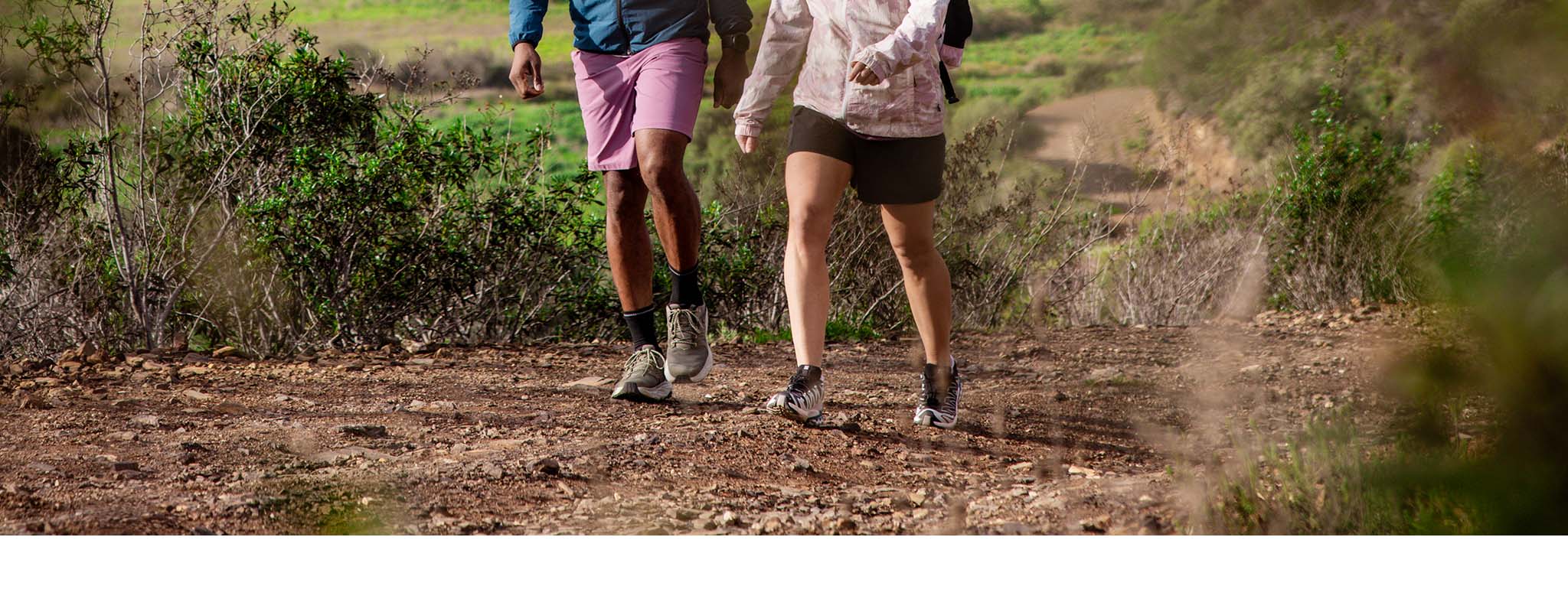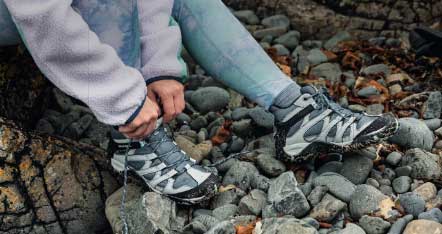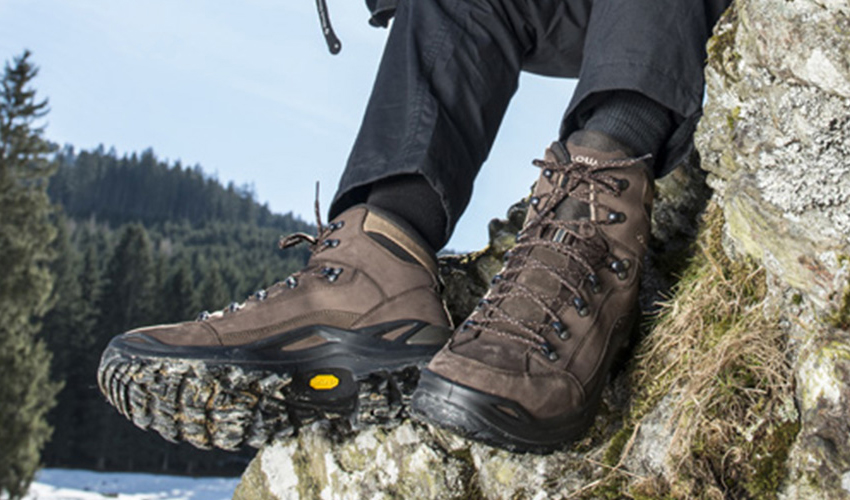When To Replace Your Walking Boots
Look out for the signs of when to repair, re-proof, and replace your walking boots...
Walking boots are the foundation of every great adventure, whether you’re scaling the Cotswold escarpment, trekking the Lake District, or exploring local trails. Knowing when to replace your walking boots-and how to spot the signs for repair, re-proofing, or responsible disposal-can make all the difference to your comfort, safety, and enjoyment outdoors.
Why Replacing Walking Boots Matters
Worn-out boots can lead to:
- Slips and falls from worn soles
- Blisters and foot pain from collapsed support
- Wet feet from failed waterproofing
- Long-term injuries from poor alignment
Investing in timely replacement or repair isn’t just about comfort-it’s about protecting your health and maximising your time outdoors.
How Long Do Walking Boots Last?
Average Lifespan
500–1,000 miles is typical for quality boots, but this varies based on:
- Terrain (rocky ground wears boots faster than grassy trails)
- Weight carried (heavier loads compress midsoles more quickly)
- Boot materials (leather vs. synthetic)
- Care and maintenance
Signs of Ageing (Beyond Mileage)
- Even if boots look “okay,” materials degrade over time (especially adhesives and waterproof membranes).
- After 5–7 years, even well-cared-for boots may need replacing due to hidden material fatigue.
Key Signs Your Walking Boots Need Repair or Replacement
| Component | Function | Common Failure Points |
|---|---|---|
Outsole |
Traction, durability | Worn lugs, separation |
| Midsole | Cushioning, support | Compression, cracking |
| Insole | Comfort, moisture management | Flattening, odour |
| Upper | Protection, waterproofing | Tears, cracks, seam failure |
| Lining/Membrane | Waterproofing, breathability | Leaks, delamination |
| Lacing system | Secure fit | Broken eyelets, torn loops |
| Ankle collar/tongue | Support, comfort | Collapse, loss of padding |
Outsole Wear and Loss of Traction
What to Check:
- Tread depth → Compare to a new pair or use a coin test. If lugs are flat, grip is compromised.
- Sole separation → Outsole peeling away from the midsole is a major red flag.
- Uneven wear → Excessive wear on one side may indicate gait problems or structural boot failure.
Why It Matters:
- Slipping risk → Especially dangerous on wet, muddy, or rocky terrain.
- Reduced shock absorption →Can lead to sore joints and fatigue.
Midsole Compression and Breakdown
What Is the Midsole? The midsole is the “cushioning layer” between the outsole and the insole, usually made from EVA (ethylene-vinyl acetate) or PU (polyurethane).
How to Test:
- Press test → Firmly press your thumb into the side of the midsole. If it feels hard, cracked, or doesn’t rebound, it’s worn out.
- Flex test → Bend the boot at the ball of the foot. If you see deep creases or hear cracking, the midsole is failing.
Upper Material Damage
What to Look For:
- Cracks or splits → Especially in leather or at flex points.
- Seam failure → Stitching coming undone or gaping.
- Eyelet or lace loop damage → Can make boots unsecure.
Technical Note → Once the upper loses structural integrity, water and debris can enter, and ankle support is compromised.
Insole and Internal Support Degradation
Signs to Watch For:
- Flattened insoles → Reduced cushioning and support.
- Odour and moisture retention → Indicates breakdown of internal materials.
- Hot spots and blisters → New discomfort in previously comfortable boots.
Repairable vs. Irreparable Damage
| Issue | Repair Option | When to Replace |
|---|---|---|
| Small sole separation | Aquaseal SR adhesive | Separation exceeds 2cm |
| Minor upper tear | Patch kit + stitching | Tears near critical seams |
| Worn laces | Replace laces | Eyelets damaged |
| Hardened insoles | Custom orthotics | Midsole compression failure |
Shop Our Care & Repair Range
How To Make Your Boots Last Longer
Scrub them clean
Mud, perspiration, and other nasties left on your boots between outings can lead to cracks in the leather or deterioration of the fabric. Dirt can also clog up membranes like GORE-TEX®, preventing the breathable membrane from working and causing sweaty feet, so keep them clean to ensure they can do their job properly. After a muddy walk, clean your boots with warm water to keep them in tip-top condition. For more help, why not take a look at our Boot Care Guide or take a look at using some of the cleaning products we recommend below:
Re-proof regularly
How to Re-Proof:
- Clean boots thoroughly (remove mud and dirt).
- Apply re-proofing spray or wax (e.g., Nikwax, Grangers) while boots are damp.
- Allow to dry naturally (avoid direct heat).
Both leather and fabric boots should be reproofed regularly to keep them at their best for longer. We recommend using our 60 Second Footwear Protection Service in-store, or take a look at using some of the reproofing products we recommend below
Time For A New Pair?
FAQs
Most last 500–1,000 miles, but terrain and weight impact this. Concrete wears soles 3x faster than trails.
Yes! Use saddle soap to clean and a beeswax conditioner (e.g., Nikwax) to restore flexibility.
For sentimental value, yes. For performance, modern boots offer better tech (e.g., graphene soles).
- Small fixes (laces, minor tears, re-proofing) are DIY-friendly.
- Major repairs (resoling, membrane replacement) are best left to professionals.
- Clean after every walk.
- Dry naturally, never with direct heat.
- Re-proof regularly.
- Store in a cool, dry place.
- Leather boots: Longer lifespan with proper care, better for rugged terrain.
- Synthetic boots: Lighter, dry faster, but may wear out sooner.
Related Articles

Let us know you agree to cookies
We use marketing, analytical and functional cookies as well as similar technologies to give you the best experience. Third parties, including social media platforms, often place tracking cookies on our site to show you personalised adverts outside of our website.
We store your cookie preferences for two years and you can edit your preferences via ‘manage cookies’ or through the cookie policy at the bottom of every page. For more information, please see our cookie policy.






